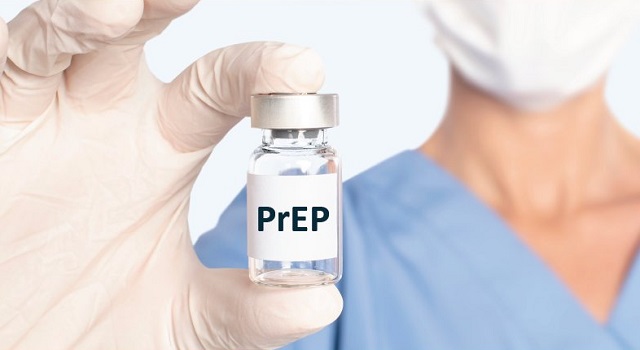Technology
Budgets that protect adolescent girls and young women are budgets that will grow Uganda
By protecting budgets that reach young women, Uganda will not only reduce HIV risk but also safeguard its human capital
COMMENT | HELLEN DIANA ZAWEDDE |
Uganda is paying a hidden development cost because many young women are acquiring new HIV infections, however, equity responsive budgets can cut infections, keep girls in school, and protect growth.
This is how it looks like in reality. At 5:30pm, a senior three student in Wakiso District finds the clinic door closed. But the clinic shelf was empty earlier anyway with neither condoms, self-test kits nor HIV prevention pills (PrEp). Tomorrow, she must choose between a test and taxi fare, seek help or keep it a secret.
In another neighbourhood of Kampala, a 20-year-old hairdresser queues at a public hospital for treatment, standing shoulder to shoulder with older patients from her neighborhood. There is no youth corner, no flexi-hours option, and no privacy. She turns back, promising to try again next month.
No wonder, the 2024 country HIV estimates showed that Uganda recorded 37,000 new infections which is roughly 700 infections a week and about 100 per day. Among 15–24-year-olds, girls and young women accounted for nearly 80% of new infections reflecting persistent vulnerabilities.
At the same time, the 2022 Uganda Demographic Health Survey (UDHS) indicates that 24% of teenage girls have already begun childbearing while only 144,401 female condoms were distributed compared to the 141 million for males in the FY2022/2023 which reveals a huge unmet need and striking inequality in protection options for adolescent girls and women.
These challenges highlight the urgency of sustained HIV prevention and treatment efforts, especially for adolescent girls and young women who continue to bear the greatest burden of the HIV epidemic. Over the years, Uganda has benefited from a strong partnership between government and development partners, with domestic resources increasingly complementing external support from initiatives such as PEPFAR and the Global Fund.
International support remains central to Uganda’s progress in the fight against HIV/AIDS. PEPFAR, the U.S. government’s flagship HIV programme, provides lifesaving ARVs to nearly 1.4 million Ugandans which is more than 95% of all people living with HIV in the country. USAID, as one of PEPFAR’s lead implementing agencies (before it was shut down), directly supported close to 175,000 girls and young women aged 10–24, helping them lower their HIV risk while also building economic and social networks for resilience.
Donor funding for Uganda’s HIV response continues to shrink, a development that is raising concerns in regards to the country’s ability to sustain progress against the epidemic. Funding from USAID fell steeply from US$ 278.9 million to US$ 227.7 million in 2024 at a time when new infections among adolescent girls and young women remain alarmingly high. The outlook is even more concerning under the current U.S. administration.
In response, the Ugandan government has stepped up with Shs 360 billion in direct funding in the 2023/24 financial year and a further Shs 62 billion mobilized for HIV/AIDS activities across ministries, departments, and local governments. Looking ahead, a dedicated budget output code for HIV/AIDS (00013) has been created in the FY2025/26 budget to strengthen lifesaving interventions.
Yet, with external support declining and fiscal pressures growing, these efforts may not be enough. Health experts warn that the funding gap could slow down prevention and treatment at a time when young Ugandan women and girls who account for most new infections need the greatest protection.
Even with shrinking fiscal space and declining donor support, Uganda can still safeguard progress by ring-fencing a small, people-centered prevention core such as after-school hours, scaled up youth-friendly clinics well-stocked with essentials like condoms, HIV self-test kits, the prevention pill (PrEP), and antiretroviral medicines, alongside basic menstrual supplies that keep girls in school, and the six-month dispensing model adopted and protected in quarterly cash releases so the basics never disappear, and harmonize treatment schedules with school programmes.
When these investments are secured, girls and young women not only find protection but also feel safe and respected when they visit clinics, confident that services and supplies will be there when they need them and without fear of missing school or work.
Classrooms keep more girls in school; clinics face shorter queues, and households avoid the burden of repeated tests and treatments. The impact stretches far beyond health—every additional year a girl remains in school raises her future earnings, delays early childbearing, and strengthens household resilience. By protecting the budgets that reach adolescent girls and young women, Uganda is not only reducing HIV risk but also safeguarding its human capital — the most powerful driver of productivity, competitiveness, and long-term economic growth.
Hellen Diana Zawedde is an economics graduate trainee at Civil Society Budget Advocacy Group (CSBAG)
By protecting budgets that reach young women, Uganda will not only reduce HIV risk but also safeguard its human capital
COMMENT | HELLEN DIANA ZAWEDDE |
Uganda is paying a hidden development cost because many young women are acquiring new HIV infections, however, equity responsive budgets can cut infections, keep girls in school, and protect growth.
This is how it looks like in reality. At 5:30pm, a senior three student in Wakiso District finds the clinic door closed. But the clinic shelf was empty earlier anyway with neither condoms, self-test kits nor HIV prevention pills (PrEp). Tomorrow, she must choose between a test and taxi fare, seek help or keep it a secret.
In another neighbourhood of Kampala, a 20-year-old hairdresser queues at a public hospital for treatment, standing shoulder to shoulder with older patients from her neighborhood. There is no youth corner, no flexi-hours option, and no privacy. She turns back, promising to try again next month.
No wonder, the 2024 country HIV estimates showed that Uganda recorded 37,000 new infections which is roughly 700 infections a week and about 100 per day. Among 15–24-year-olds, girls and young women accounted for nearly 80% of new infections reflecting persistent vulnerabilities.
At the same time, the 2022 Uganda Demographic Health Survey (UDHS) indicates that 24% of teenage girls have already begun childbearing while only 144,401 female condoms were distributed compared to the 141 million for males in the FY2022/2023 which reveals a huge unmet need and striking inequality in protection options for adolescent girls and women.
These challenges highlight the urgency of sustained HIV prevention and treatment efforts, especially for adolescent girls and young women who continue to bear the greatest burden of the HIV epidemic. Over the years, Uganda has benefited from a strong partnership between government and development partners, with domestic resources increasingly complementing external support from initiatives such as PEPFAR and the Global Fund.
International support remains central to Uganda’s progress in the fight against HIV/AIDS. PEPFAR, the U.S. government’s flagship HIV programme, provides lifesaving ARVs to nearly 1.4 million Ugandans which is more than 95% of all people living with HIV in the country. USAID, as one of PEPFAR’s lead implementing agencies (before it was shut down), directly supported close to 175,000 girls and young women aged 10–24, helping them lower their HIV risk while also building economic and social networks for resilience.
Donor funding for Uganda’s HIV response continues to shrink, a development that is raising concerns in regards to the country’s ability to sustain progress against the epidemic. Funding from USAID fell steeply from US$ 278.9 million to US$ 227.7 million in 2024 at a time when new infections among adolescent girls and young women remain alarmingly high. The outlook is even more concerning under the current U.S. administration.
In response, the Ugandan government has stepped up with Shs 360 billion in direct funding in the 2023/24 financial year and a further Shs 62 billion mobilized for HIV/AIDS activities across ministries, departments, and local governments. Looking ahead, a dedicated budget output code for HIV/AIDS (00013) has been created in the FY2025/26 budget to strengthen lifesaving interventions.
Yet, with external support declining and fiscal pressures growing, these efforts may not be enough. Health experts warn that the funding gap could slow down prevention and treatment at a time when young Ugandan women and girls who account for most new infections need the greatest protection.
Even with shrinking fiscal space and declining donor support, Uganda can still safeguard progress by ring-fencing a small, people-centered prevention core such as after-school hours, scaled up youth-friendly clinics well-stocked with essentials like condoms, HIV self-test kits, the prevention pill (PrEP), and antiretroviral medicines, alongside basic menstrual supplies that keep girls in school, and the six-month dispensing model adopted and protected in quarterly cash releases so the basics never disappear, and harmonize treatment schedules with school programmes.
When these investments are secured, girls and young women not only find protection but also feel safe and respected when they visit clinics, confident that services and supplies will be there when they need them and without fear of missing school or work.
Classrooms keep more girls in school; clinics face shorter queues, and households avoid the burden of repeated tests and treatments. The impact stretches far beyond health—every additional year a girl remains in school raises her future earnings, delays early childbearing, and strengthens household resilience. By protecting the budgets that reach adolescent girls and young women, Uganda is not only reducing HIV risk but also safeguarding its human capital — the most powerful driver of productivity, competitiveness, and long-term economic growth.
Hellen Diana Zawedde is an economics graduate trainee at Civil Society Budget Advocacy Group (CSBAG)




